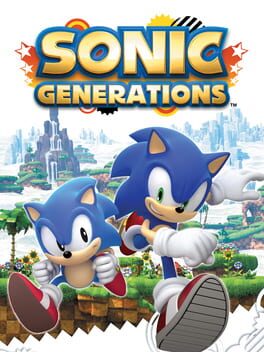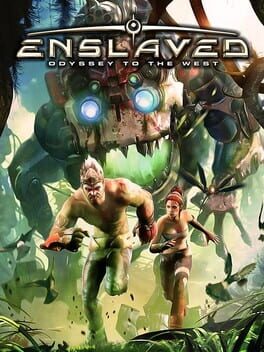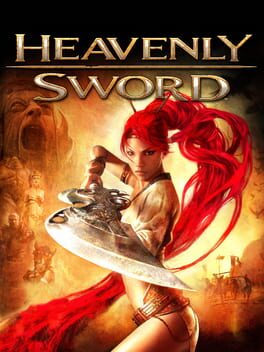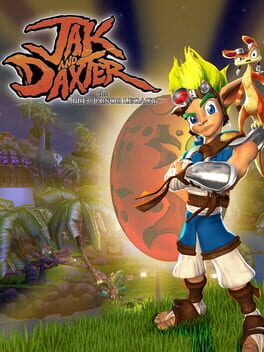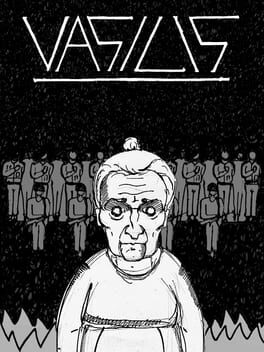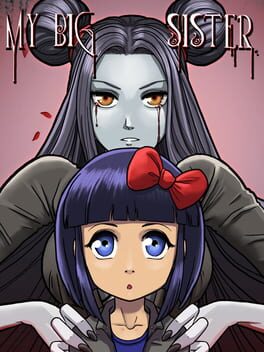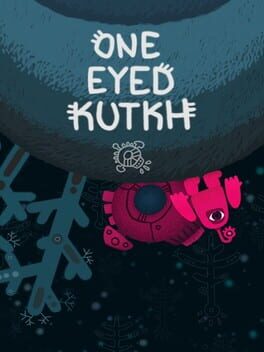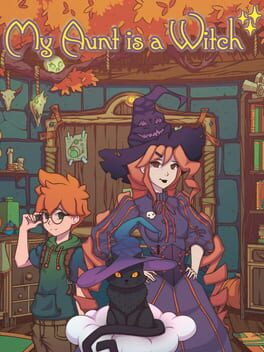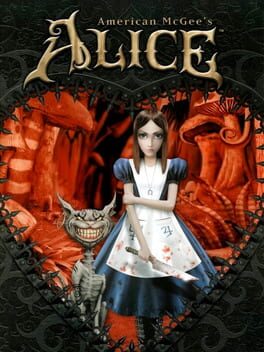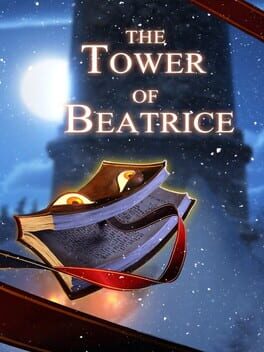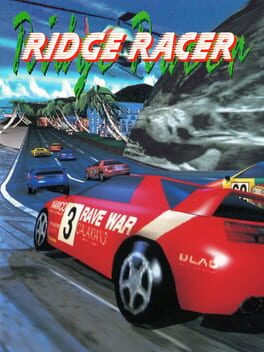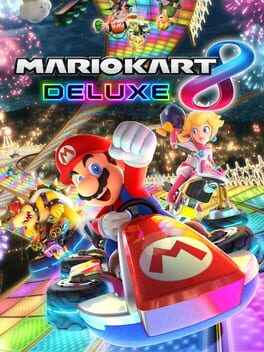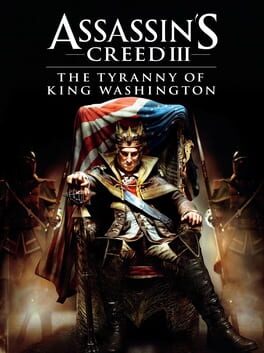IriidaV
Not necessarily reviewing the games themselves but the contents - getting the original 5 main titles in one, non bulky package (on a singular disc in the PlayStation 3's case!) is extraordinary value for money, and you can still find this collection relatively cheap on the second hand market. Only downside is the lack of DLC included - I believe the stuff for ACII has a code to redeem but everything else has to be bought and downloaded from their respective store.
2011
PAL copy played on an Xbox One X.
Over ten years later and it's a shame that Generations remains to be the last consistently solid Sonic title - and even then it feels like a "just" at times. The main series of levels feel solidly designed and while the bonus missions feel like padding at the best of times, the game has an overall solid presentation with good art direction and song remixes.
My main complaints relay to the length - easily a 5-6 hour game if you're not going for a completionist route and the lack of a third, "Adventure"-era Sonic with the more exploratative level design feels like a missed opportunity. It also feels a bit rushed with a number of features feeling entirely underbaked such as the bonus anniversary features and the final boss being a bit of an anti-climax. Thankfully it doesn't reach the disappointing lows of the 15th anniversary celebration with '06 but with this being only 5 years and several games later it does feel like Sonic Team should have maybe been allowed more time.
This is overall a fun game and perhaps the truly last "great" Sonic title whilst being a decent summation of the franchise's then 20 year history, but it's not without its flaws and they feel more evident as time goes on.
Over ten years later and it's a shame that Generations remains to be the last consistently solid Sonic title - and even then it feels like a "just" at times. The main series of levels feel solidly designed and while the bonus missions feel like padding at the best of times, the game has an overall solid presentation with good art direction and song remixes.
My main complaints relay to the length - easily a 5-6 hour game if you're not going for a completionist route and the lack of a third, "Adventure"-era Sonic with the more exploratative level design feels like a missed opportunity. It also feels a bit rushed with a number of features feeling entirely underbaked such as the bonus anniversary features and the final boss being a bit of an anti-climax. Thankfully it doesn't reach the disappointing lows of the 15th anniversary celebration with '06 but with this being only 5 years and several games later it does feel like Sonic Team should have maybe been allowed more time.
This is overall a fun game and perhaps the truly last "great" Sonic title whilst being a decent summation of the franchise's then 20 year history, but it's not without its flaws and they feel more evident as time goes on.
EU copy played on a PlayStation 3 Super Slim.
Going from Heavenly Sword to Enslaved is a pretty big step up - the characters feel more interesting, the art is more detailed with higher fidelity on the character models and environment, and the art direction can be a stunning, colourful departure from the bland backdrops in HS. Controls feel tighter too and the gameplay is just more fun all round. I did enjoy HS (for the most part), but this feels like Ninja Theory made a bigger accomplishment in both tech and entertainment.
Once Pigsy's introduced however, all chemistry between characters goes out the window along with any sense of the plot. Gameplay was still fun but I was caught off guard a couple of times by things the game expected me to know without telegraphing anything. The settings got a bit boring as well with purely factory and machine-based levels in the second half which took away from the lush greenery of early levels.
The end-game twist was, uh, definitely a choice too.
Overall I enjoyed it but outside of picking up the leftover trophies I don't know if I'll play it all the way through again.
Going from Heavenly Sword to Enslaved is a pretty big step up - the characters feel more interesting, the art is more detailed with higher fidelity on the character models and environment, and the art direction can be a stunning, colourful departure from the bland backdrops in HS. Controls feel tighter too and the gameplay is just more fun all round. I did enjoy HS (for the most part), but this feels like Ninja Theory made a bigger accomplishment in both tech and entertainment.
Once Pigsy's introduced however, all chemistry between characters goes out the window along with any sense of the plot. Gameplay was still fun but I was caught off guard a couple of times by things the game expected me to know without telegraphing anything. The settings got a bit boring as well with purely factory and machine-based levels in the second half which took away from the lush greenery of early levels.
The end-game twist was, uh, definitely a choice too.
Overall I enjoyed it but outside of picking up the leftover trophies I don't know if I'll play it all the way through again.
2007
EU copy played on a PlayStation 3 Super Slim.
Is this the kind of game people were complaining about a decade ago where they were super linear, 6 hours long and barely had side content? I cant say I didn't enjoy myself but there was too much reliance on the sixaxis feature and altering control schemes to be a solid effort. Felt like I was playing a rougher Hellblade the entire time but I guess wiping out armies by the hundreds in the endgame was kinda fun.
The villains were pretty enjoyable too - Andy Serkis was a joy to watch as the main bad guy and the others were so over the top it just made their scenes entertaining. Although it was a shame they didn't have a woman of Japanese descent play the main character but I guess standards were different back then for that sort of thing.
If you manage to find this for a couple bucks and have a few afternoons to spare it's alright time, just nothign groundbreaking by today's standards but it's at least fairly coherent and executes it's ideas.
Is this the kind of game people were complaining about a decade ago where they were super linear, 6 hours long and barely had side content? I cant say I didn't enjoy myself but there was too much reliance on the sixaxis feature and altering control schemes to be a solid effort. Felt like I was playing a rougher Hellblade the entire time but I guess wiping out armies by the hundreds in the endgame was kinda fun.
The villains were pretty enjoyable too - Andy Serkis was a joy to watch as the main bad guy and the others were so over the top it just made their scenes entertaining. Although it was a shame they didn't have a woman of Japanese descent play the main character but I guess standards were different back then for that sort of thing.
If you manage to find this for a couple bucks and have a few afternoons to spare it's alright time, just nothign groundbreaking by today's standards but it's at least fairly coherent and executes it's ideas.
UK copy played on a PS Vita OLED model.
I love The Precursor Legacy - I've completed this game numerous times, now on numerous platforms and this version for the Vita is by far the worst way to experience it. The framerate, the model clipping, the input lag, unregistered button presses and the way the game will just load up from sleep mode and just not have some of the buttons register at all make this a nearly unplayable game.
I say "nearly" because it is doable, not too bad even, for the majority of the game. Then you reach Gol and Maia's Citadel and what should be a test of your platforming abilities with tight level design becomes a test in frustration with that second jump becoming trickier with the crappy input detection and the animation for just grabbing a ledge from a long jump glitching out 95% of the time, leaving you falling into the bottomless pits.
By all means play this game, it's probably the best platformer in its purest sense of the PS2, but don't play the Vita version.
I love The Precursor Legacy - I've completed this game numerous times, now on numerous platforms and this version for the Vita is by far the worst way to experience it. The framerate, the model clipping, the input lag, unregistered button presses and the way the game will just load up from sleep mode and just not have some of the buttons register at all make this a nearly unplayable game.
I say "nearly" because it is doable, not too bad even, for the majority of the game. Then you reach Gol and Maia's Citadel and what should be a test of your platforming abilities with tight level design becomes a test in frustration with that second jump becoming trickier with the crappy input detection and the animation for just grabbing a ledge from a long jump glitching out 95% of the time, leaving you falling into the bottomless pits.
By all means play this game, it's probably the best platformer in its purest sense of the PS2, but don't play the Vita version.
2019
UK copy played on a PlayStation Vita OLED model.
I hate games like this - passion projects that clearly have a lot of meaning to the developers and are a deeply personal bearing of their souls that are completely marred by a poor presentation.
Vasilis could have been a good game, not a great one mind you but that's more up for personal debate and dependant on where your tastes lie. It has a great and subtle art style and sound design, relayed to you in simplistic animations and eerie soundscapes. The narrative is very unclear at times - I followed everything up until the half way point and then I got quite confused trying to tell what was literal and what was symbolic - but it is interesting and does manage to be unique given the subject matter and setting.
The game design is where things start to fall apart however. On its own, a simple exploratory, task-driven adventure game set in an isolated environment should be a fairly simple thing to get right, but the slow walking speed, coupled with the lengthy load times between scenes and the constant stuttering when you're just walking ultimately served to distract and detract from the overall experience. It was quite frustrating at times, knowing a task that could easily have taken a minute to do was dragged out with multiple 10 second loading screens and being confused as to where you are because the in-game map simply isn't clear enough.
Maybe the PC and home console versions are better but playing this game on the Vita was a terrible experience and I think I've seen enough after playing to the end once.
I hate games like this - passion projects that clearly have a lot of meaning to the developers and are a deeply personal bearing of their souls that are completely marred by a poor presentation.
Vasilis could have been a good game, not a great one mind you but that's more up for personal debate and dependant on where your tastes lie. It has a great and subtle art style and sound design, relayed to you in simplistic animations and eerie soundscapes. The narrative is very unclear at times - I followed everything up until the half way point and then I got quite confused trying to tell what was literal and what was symbolic - but it is interesting and does manage to be unique given the subject matter and setting.
The game design is where things start to fall apart however. On its own, a simple exploratory, task-driven adventure game set in an isolated environment should be a fairly simple thing to get right, but the slow walking speed, coupled with the lengthy load times between scenes and the constant stuttering when you're just walking ultimately served to distract and detract from the overall experience. It was quite frustrating at times, knowing a task that could easily have taken a minute to do was dragged out with multiple 10 second loading screens and being confused as to where you are because the in-game map simply isn't clear enough.
Maybe the PC and home console versions are better but playing this game on the Vita was a terrible experience and I think I've seen enough after playing to the end once.
2018
UK copy played on a PlayStation Vita OLED model.
I've never gotten very far in any survival horror game I've played in the past, but although My Big Sister isn't quite a true entry to the genre I feel it's at least a good gateway to the gameplay loops and story themes those titles typically focus on.
Honestly this game surprised me in how great it really was - there's a couple of "gotcha" jump scares sure but they're hardly the focus in this winding narrative-driven game, instead focusing on the sprawling mystery of just what the hell is going on with a constant sense of unease throughout. It manages to keep a charming artstyle and soundtrack whilst being able to effortlessly veer both into unsettling territory at the drop of a hat and the fact it manages to wrap it all up with dialogue that can match that tone whilst also having a little fun at the same time was pretty entertaining to experience.
I won't pretend to understand the ending (or rather the multiple endings) but I at least enjoyed the interactions of both sisters throughout the experience and the whole thing ended up feeling like some twisted version of Spirited Away which was cool.
I'd easily recommend this game - an extremely fun few hours for sure!
I've never gotten very far in any survival horror game I've played in the past, but although My Big Sister isn't quite a true entry to the genre I feel it's at least a good gateway to the gameplay loops and story themes those titles typically focus on.
Honestly this game surprised me in how great it really was - there's a couple of "gotcha" jump scares sure but they're hardly the focus in this winding narrative-driven game, instead focusing on the sprawling mystery of just what the hell is going on with a constant sense of unease throughout. It manages to keep a charming artstyle and soundtrack whilst being able to effortlessly veer both into unsettling territory at the drop of a hat and the fact it manages to wrap it all up with dialogue that can match that tone whilst also having a little fun at the same time was pretty entertaining to experience.
I won't pretend to understand the ending (or rather the multiple endings) but I at least enjoyed the interactions of both sisters throughout the experience and the whole thing ended up feeling like some twisted version of Spirited Away which was cool.
I'd easily recommend this game - an extremely fun few hours for sure!
2017
UK copy played on a PlayStation Vita OLED model.
This wasn't bad - for an experience that lasted a half hour, plus another half hour to get all the trophies, this was a unique, if maybe not the most memorable time.
The aesthetics and sound design were charming and gave me the very odd sensation of playing through one of the more obscure and weird Samurai Jack episodes - no spoken dialogue or big bouts of action, but a fairly clear plot with dreamy music and strange alien noises.
The lack of communication for how to interact with the game was frustrating though since the Vita version would accept d-pad inputs as controls but not the face buttons that were literally on screen as options in the first scene. This coupled with character speeds could get a little frustrating at times and the long climb up the tree early in the game gave me the impression I had done something wrong.
All in all not a terrible time - it has some design issues and could have benefited from another round of QA testing just to iron out some of the more vague kinks, but I did ultimately enjoy my time with One Eyed Kutkh and I'd be very curious to check out the dev team's other projects.
This wasn't bad - for an experience that lasted a half hour, plus another half hour to get all the trophies, this was a unique, if maybe not the most memorable time.
The aesthetics and sound design were charming and gave me the very odd sensation of playing through one of the more obscure and weird Samurai Jack episodes - no spoken dialogue or big bouts of action, but a fairly clear plot with dreamy music and strange alien noises.
The lack of communication for how to interact with the game was frustrating though since the Vita version would accept d-pad inputs as controls but not the face buttons that were literally on screen as options in the first scene. This coupled with character speeds could get a little frustrating at times and the long climb up the tree early in the game gave me the impression I had done something wrong.
All in all not a terrible time - it has some design issues and could have benefited from another round of QA testing just to iron out some of the more vague kinks, but I did ultimately enjoy my time with One Eyed Kutkh and I'd be very curious to check out the dev team's other projects.
2020
UK digital release played on a PlayStation Vita OLED model.
For a visual novel to be a viable and engaging game to me, it has to both have an interesting story and a decent amount of interactive content. My Aunt Is A Witch unfortunately has neither of those, with up to a whole hour's worth of non-interactive dialogue at a time between what can range between one to ten minutes' worth of gameplay, and that dialogue being largely stale and unengaging, driving a plot that I just gave up on trying to follow fairly early in.
It's a shame, because someone very clearly wanted to make this game with an involved narrative, a fairly solid art style and imaginative puzzle sections. But the uninteresting dialogue between characters combined with the graphical glitches of backgrounds and character art disappearing between scenes if you play too long and the game just completely crashing when you want to save that the Vita release adds to the mix, I did not enjoy my time with this game whatsoever.
For a visual novel to be a viable and engaging game to me, it has to both have an interesting story and a decent amount of interactive content. My Aunt Is A Witch unfortunately has neither of those, with up to a whole hour's worth of non-interactive dialogue at a time between what can range between one to ten minutes' worth of gameplay, and that dialogue being largely stale and unengaging, driving a plot that I just gave up on trying to follow fairly early in.
It's a shame, because someone very clearly wanted to make this game with an involved narrative, a fairly solid art style and imaginative puzzle sections. But the uninteresting dialogue between characters combined with the graphical glitches of backgrounds and character art disappearing between scenes if you play too long and the game just completely crashing when you want to save that the Vita release adds to the mix, I did not enjoy my time with this game whatsoever.
EU release played on a PlayStation 3 Super Slim.
This is a 90s PC game through and through, so far that it was built on the Quake III Arena engine and it really shows in a lot of places. I can forgive the aging of visuals and game design for the most part but you can tell this game was made before the age of PC-compatible gamepads. Aiming the camera, while useful in it's precision for dispatching enemies, can be clunky at times, and the fact that 90s PC games thought they could do platforming even remotely well is beyond me now. Enemies range from shockingly easy to "you died in seconds" in a heartbeat and level design can be infuriatingly back-tracky and complex at times, often forcing you adopt a method of defeating some enemies, saving, and moving onto the next lot before saving again just to make sure you don't waste a whole load of time repeating yourself.
But this game has a really solid art direction, and as much as I'm tired of the "subvert the Wonderland theme in media to make stuff creepy" shtick, this and it's sequel Madness Returns does a wonderful job of capturing an unpleasantness of certain characters if you're familiar with the source material. The music is great too - while a lot of the tracks are recycled throughout some levels, Chris Vrenna of Nine Inch Nails fame composes a really competent sound track with a wide variety of emotion and energy to the scores.
Overall this a beautifully frustrating game which I would probably prefer to play on PC and one that while still payable today, is clearly of the time before a lot of modern gaming conventions. I'd easily recommend it to anyone interested the concept but it's sequel can be played on its own if you're not for wrestling with older and stiffer gameplay.
This is a 90s PC game through and through, so far that it was built on the Quake III Arena engine and it really shows in a lot of places. I can forgive the aging of visuals and game design for the most part but you can tell this game was made before the age of PC-compatible gamepads. Aiming the camera, while useful in it's precision for dispatching enemies, can be clunky at times, and the fact that 90s PC games thought they could do platforming even remotely well is beyond me now. Enemies range from shockingly easy to "you died in seconds" in a heartbeat and level design can be infuriatingly back-tracky and complex at times, often forcing you adopt a method of defeating some enemies, saving, and moving onto the next lot before saving again just to make sure you don't waste a whole load of time repeating yourself.
But this game has a really solid art direction, and as much as I'm tired of the "subvert the Wonderland theme in media to make stuff creepy" shtick, this and it's sequel Madness Returns does a wonderful job of capturing an unpleasantness of certain characters if you're familiar with the source material. The music is great too - while a lot of the tracks are recycled throughout some levels, Chris Vrenna of Nine Inch Nails fame composes a really competent sound track with a wide variety of emotion and energy to the scores.
Overall this a beautifully frustrating game which I would probably prefer to play on PC and one that while still payable today, is clearly of the time before a lot of modern gaming conventions. I'd easily recommend it to anyone interested the concept but it's sequel can be played on its own if you're not for wrestling with older and stiffer gameplay.
UK copy played on a PlayStation Vita OLED model.
I haven't played a point n click puzzle game in a long while and I'll freely admit The Tower of Beatrice was a spur of the moment purchase via the PSN's current Indies sale but I had a fun evening with this game.
The puzzles start you off fairly easy but will require some thinking as you go further, requiring you to pay attention to everything that happens or is being said, and it's all backed up with a lighthearted story with fun characters. Unfortunately I don't think the writer's first language is English due to some minor grammatical errors in the script and some voice acting would have been appreciated to really sell the more funny dialogue but given the scope and budget this game probably had, it probably wouldn't have been possible and the aforementioned grammatical stuff isn't very egregious. The art style is pretty good too with a very warm digital painted art style and the music is well crafted enough to not get annoying when you're still in a room half an hour later.
If these kinds of games are your jam, or even if they aren't I'd recommend giving this a shot - there's no time pressure or risk of game overs so the whole experience is just a nice relaxingtime figuring out kooky puzzles with a fun witch character.
I haven't played a point n click puzzle game in a long while and I'll freely admit The Tower of Beatrice was a spur of the moment purchase via the PSN's current Indies sale but I had a fun evening with this game.
The puzzles start you off fairly easy but will require some thinking as you go further, requiring you to pay attention to everything that happens or is being said, and it's all backed up with a lighthearted story with fun characters. Unfortunately I don't think the writer's first language is English due to some minor grammatical errors in the script and some voice acting would have been appreciated to really sell the more funny dialogue but given the scope and budget this game probably had, it probably wouldn't have been possible and the aforementioned grammatical stuff isn't very egregious. The art style is pretty good too with a very warm digital painted art style and the music is well crafted enough to not get annoying when you're still in a room half an hour later.
If these kinds of games are your jam, or even if they aren't I'd recommend giving this a shot - there's no time pressure or risk of game overs so the whole experience is just a nice relaxingtime figuring out kooky puzzles with a fun witch character.
NTSC U/C copy played on a PAL modified PlayStation 2 Slim.
I'm constantly surprised when people state Up Your Arsenal is their favorite of the PS2 Ratchet games. Even playing this game as a kid I wasn't really convinced of its quality and coming back to it as an adult after wrapping up Ratchet 1, 2 and Deadlocked this really does feel like the weakest of the bunch.
Mission design feels wonky - often following the standard formula of running and gunning through a well-crafted level to reach an objective with the occasional death match arena and more open arena to spice things up a bit, but it was the repeated "survive enemy waves in a small area" missions that frustrated me, not only forcing you to play through essentially the same content up to 5 times in a row, but doing so with it lasting way too long each time. It felt like padding, and with the previous Ratchet games not really having experienced that before it was a real shame to see it here.
My other issue was with the story. I know non RPG PS2 games were typically light on plot and the Ratchet series never did take itself very seriously but the complete lack of competency from anyone outside of Ratchet and Clank is incredibly frustrating at times. The story feels less like a whacky sci-fi adventure that the previous 2 games set the tone for and more like a parody of itself, with returning characters being boiled down to caricatures of what they once were.
The weapon selection is nice at least, with an evolution on some of the previous entries but with the later levels featuring enemies that just soak up damage like nothing else they all feel kind of pointless in the end. The Spitting Hydra feels completely useless both in it's base and fully upgraded forms with enemies taking as many as 10-15 hits with the thing before dying, and the same critiques can be applied to a handful of the other weapons too. The last few levels and bosses ended up requiring too much ammo from me in the end so I ended up using the rocket boots to skip entire portions of the stages to get to boss encounters fully stocked, with the final fight with Nefarious being especially egregious.
Overall, Ratchet 3 ultimately fine. It would feel like a good game on its own but in comparison to the previous games and the fact development was especially rushed with the multiplayer content taking up a fair bit of the team's time, I just didn't care for this one. The other PS2 Ratchet games I've gone back to multiple times as well as their New Game + modes, but when I finally finished Up Your Arsenal this week I put it down and have no intentions to really go back to it again.
But then maybe I'm just bitter this got higher reviews than Jak 3 at the time od release and I was always a Jak guy first.
I'm constantly surprised when people state Up Your Arsenal is their favorite of the PS2 Ratchet games. Even playing this game as a kid I wasn't really convinced of its quality and coming back to it as an adult after wrapping up Ratchet 1, 2 and Deadlocked this really does feel like the weakest of the bunch.
Mission design feels wonky - often following the standard formula of running and gunning through a well-crafted level to reach an objective with the occasional death match arena and more open arena to spice things up a bit, but it was the repeated "survive enemy waves in a small area" missions that frustrated me, not only forcing you to play through essentially the same content up to 5 times in a row, but doing so with it lasting way too long each time. It felt like padding, and with the previous Ratchet games not really having experienced that before it was a real shame to see it here.
My other issue was with the story. I know non RPG PS2 games were typically light on plot and the Ratchet series never did take itself very seriously but the complete lack of competency from anyone outside of Ratchet and Clank is incredibly frustrating at times. The story feels less like a whacky sci-fi adventure that the previous 2 games set the tone for and more like a parody of itself, with returning characters being boiled down to caricatures of what they once were.
The weapon selection is nice at least, with an evolution on some of the previous entries but with the later levels featuring enemies that just soak up damage like nothing else they all feel kind of pointless in the end. The Spitting Hydra feels completely useless both in it's base and fully upgraded forms with enemies taking as many as 10-15 hits with the thing before dying, and the same critiques can be applied to a handful of the other weapons too. The last few levels and bosses ended up requiring too much ammo from me in the end so I ended up using the rocket boots to skip entire portions of the stages to get to boss encounters fully stocked, with the final fight with Nefarious being especially egregious.
Overall, Ratchet 3 ultimately fine. It would feel like a good game on its own but in comparison to the previous games and the fact development was especially rushed with the multiplayer content taking up a fair bit of the team's time, I just didn't care for this one. The other PS2 Ratchet games I've gone back to multiple times as well as their New Game + modes, but when I finally finished Up Your Arsenal this week I put it down and have no intentions to really go back to it again.
But then maybe I'm just bitter this got higher reviews than Jak 3 at the time od release and I was always a Jak guy first.
1993
NTSC U/C copy played on a PlayStation 2 Slim.
I can't compare the PlayStation port of Ridge Racer to its arcade original but as a standalone console game, I think it's fair to say it's a mixed bag at best.
On one hand you have a fairly solid, if very early, form of the drift racer that the series would go on to excel at. While you can get away with holding the accelerate button for the vast majority of each of the two variations of the one track, only occasionally will you have to tap the break button to initiate a wavy drift before it locks you back into a standard driving mode again. It takes a while to get used to and master that "snapping" motion it forces upon you but once you've gotten a handle on it the maneuver can be satisfying.
But really that's all there is to talk about - the cars have different handlings sure but nothing to write home about and the track"s" on display here arr literally just the same one with a slightly more challenging route unlocked for the higher speed racers.
The music's pretty decent, depending heavily on how you view early 90s electronica - some are fun like the classic "Ridge Racer" (here in its more primal form) and "Feeling Over", but then there's the nightmarish "Rotterdam Nation" which feels like you're descending into some hellish landscape.
There are some extras and unlockables you can find, namely the mirrored tracks by driving backwards at the start of each race, and the bonus cars that can be accessed by beating the arcade mini game that plays during the "Now Loading" screen, but they don't radically change the game in any meaningful way.
I'd heavily recommend tracking down a copy of Ridge Racer Type 4 with the Bonus Turbo Disc included as this contains a 60fps version of the game, if a much more stripped back one.
Overall Ridge Racer isn't bad - it's solid and serviceable and worth the 2-3 hours it takes to master it, but I certainly wouldn't have been happy paying the RRP for it.
I can't compare the PlayStation port of Ridge Racer to its arcade original but as a standalone console game, I think it's fair to say it's a mixed bag at best.
On one hand you have a fairly solid, if very early, form of the drift racer that the series would go on to excel at. While you can get away with holding the accelerate button for the vast majority of each of the two variations of the one track, only occasionally will you have to tap the break button to initiate a wavy drift before it locks you back into a standard driving mode again. It takes a while to get used to and master that "snapping" motion it forces upon you but once you've gotten a handle on it the maneuver can be satisfying.
But really that's all there is to talk about - the cars have different handlings sure but nothing to write home about and the track"s" on display here arr literally just the same one with a slightly more challenging route unlocked for the higher speed racers.
The music's pretty decent, depending heavily on how you view early 90s electronica - some are fun like the classic "Ridge Racer" (here in its more primal form) and "Feeling Over", but then there's the nightmarish "Rotterdam Nation" which feels like you're descending into some hellish landscape.
There are some extras and unlockables you can find, namely the mirrored tracks by driving backwards at the start of each race, and the bonus cars that can be accessed by beating the arcade mini game that plays during the "Now Loading" screen, but they don't radically change the game in any meaningful way.
I'd heavily recommend tracking down a copy of Ridge Racer Type 4 with the Bonus Turbo Disc included as this contains a 60fps version of the game, if a much more stripped back one.
Overall Ridge Racer isn't bad - it's solid and serviceable and worth the 2-3 hours it takes to master it, but I certainly wouldn't have been happy paying the RRP for it.
2017
This game is a pretty competent kart racer and an all round fun time with friends, with lots of racer and tracks to pick from and a decent level of kart customisation you match a drive style ypu prefer. But unfortunately there's not really much else here once you've played through each cup once. You can keep going to unlock some extra kart bits and pieces but since all tracks and players are unlocked from the get go there's's no real incentive to carry on playing after hitting the credits.
Will definitely break this out for parties but I'm not liable to return to it just on my own.
Will definitely break this out for parties but I'm not liable to return to it just on my own.
EU copy played on a PlayStation 3 Super Slim.
This is by far a more enjoyable experience than Assassin's Creed III but it only earns that respect through the lens and context of the base game. It's a lot shorter for example, without all the unnecessary bloat and filler, and thus has a much more streamlined narrative. This is essentially a What If...? tale (or Elseworlds if you're DC-inclined) that takes the initial backdrop of the early American Colonies that ACIII did and turns it on it's head, all while keeping within continuity somehow. But it still has a lot of the old frustrations whilst managing to add new ones.
The gameplay is fun if a little tiring at times. Connor (or Ratonhnhaké:ton as he goes by since the events are different) never leaves a notorious state with the guards, meaning they'll attack him within seconds of spotting him. This works out fine in the first episode which takes place in the Frontier, with big open spaces to avoid conflict but it becomes increasingly harder in the following episodes where conflict is completely unavoidable at times. This isn't helped by what seems to be a huge spike in the AI's difficulty, causing waves of guards to appear, loss of attention taking at least five times that required in the base game and attacks to not be telegraphed with the little red triangles, meaning the game won't let you counter and you get hit. The animations involved also seem to be quite buggy, resulting in a lot of executions or counter animatics unsyncing with the actors involved. It feels very sloppy overall and while the increase in difficulty seems fun at first, none of your weapons feel as though they have differing attack stats so it falls into standard ACIII patterns of block-attack or block-counter-attack.
This is where the gameplay has its biggest draw - the animal spirit powers. This feels very much like Ubisoft was testing the waters for a possible branch in the franchise with these abilities because not only are they well-designed, they're also really fun to use and change the way gameplay feels entirely to the point where I played through the entirety of the later episodes with purely the tomahawk and totem powers.
The story itself then is an entertaining twist on AC3 - the same things roughly happen but their reasoning and involved characters can differ wildly and through that perspective is what kept it so interesting to me. But the same issues with bland and forgettable characters still persist here, even if ones like Washington and Ratonhnhaké:ton's mother and friend do get more screen time and abit of added depth.
Honestly probably the best part of this DLC is the new music, which manages to be more memorable than the majority of music in the base game.
All in all, if you've already played ACIII then I recommend checking out this DLC - it almost feels like the superior version of the original game, and I'd be curious to see what the franchise would be like today if it went down this path instead. It freshens the characters, setting and gameplay up whilst keeping within a comfortable length too, but I'll be honest in saying I'm not sure what those who haven't played the original game itself would get out of this.
This is by far a more enjoyable experience than Assassin's Creed III but it only earns that respect through the lens and context of the base game. It's a lot shorter for example, without all the unnecessary bloat and filler, and thus has a much more streamlined narrative. This is essentially a What If...? tale (or Elseworlds if you're DC-inclined) that takes the initial backdrop of the early American Colonies that ACIII did and turns it on it's head, all while keeping within continuity somehow. But it still has a lot of the old frustrations whilst managing to add new ones.
The gameplay is fun if a little tiring at times. Connor (or Ratonhnhaké:ton as he goes by since the events are different) never leaves a notorious state with the guards, meaning they'll attack him within seconds of spotting him. This works out fine in the first episode which takes place in the Frontier, with big open spaces to avoid conflict but it becomes increasingly harder in the following episodes where conflict is completely unavoidable at times. This isn't helped by what seems to be a huge spike in the AI's difficulty, causing waves of guards to appear, loss of attention taking at least five times that required in the base game and attacks to not be telegraphed with the little red triangles, meaning the game won't let you counter and you get hit. The animations involved also seem to be quite buggy, resulting in a lot of executions or counter animatics unsyncing with the actors involved. It feels very sloppy overall and while the increase in difficulty seems fun at first, none of your weapons feel as though they have differing attack stats so it falls into standard ACIII patterns of block-attack or block-counter-attack.
This is where the gameplay has its biggest draw - the animal spirit powers. This feels very much like Ubisoft was testing the waters for a possible branch in the franchise with these abilities because not only are they well-designed, they're also really fun to use and change the way gameplay feels entirely to the point where I played through the entirety of the later episodes with purely the tomahawk and totem powers.
The story itself then is an entertaining twist on AC3 - the same things roughly happen but their reasoning and involved characters can differ wildly and through that perspective is what kept it so interesting to me. But the same issues with bland and forgettable characters still persist here, even if ones like Washington and Ratonhnhaké:ton's mother and friend do get more screen time and abit of added depth.
Honestly probably the best part of this DLC is the new music, which manages to be more memorable than the majority of music in the base game.
All in all, if you've already played ACIII then I recommend checking out this DLC - it almost feels like the superior version of the original game, and I'd be curious to see what the franchise would be like today if it went down this path instead. It freshens the characters, setting and gameplay up whilst keeping within a comfortable length too, but I'll be honest in saying I'm not sure what those who haven't played the original game itself would get out of this.

